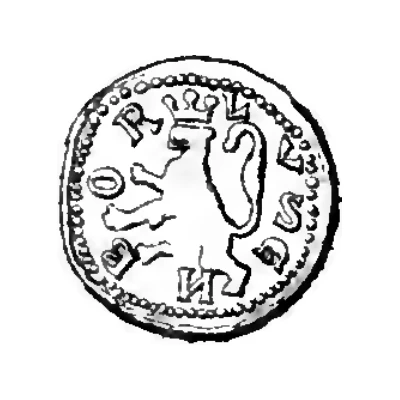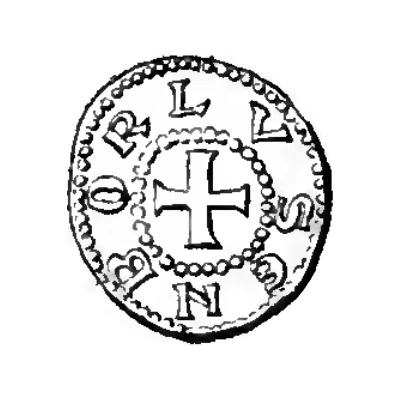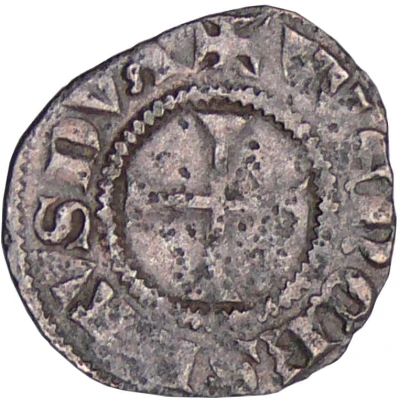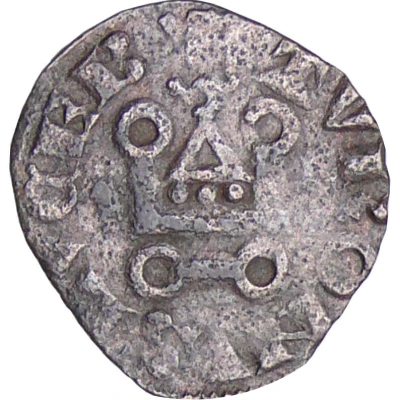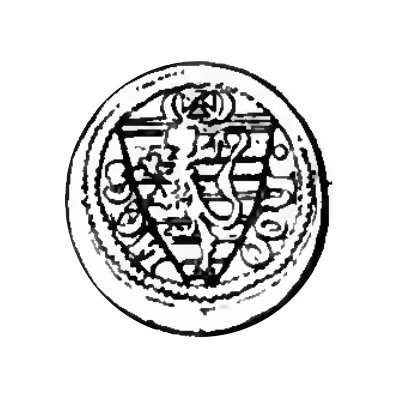
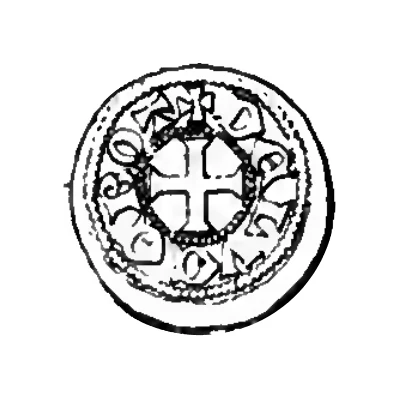

© B. de Jonghe, 1903
Denier - Henri VI ND
| Silver | 0.44 g | - |
| Issuer | County of Luxembourg (Luxembourg) |
|---|---|
| Count | Henry VI (1281-1288) |
| Type | Standard circulation coin |
| Years | 1281-1288 |
| Currency | Livre Tournois (963-1353) |
| Composition | Silver |
| Weight | 0.44 g |
| Shape | Round (irregular) |
| Technique | Hammered |
| Demonetized | Yes |
| Updated | 2024-10-06 |
| Numista | N#96080 |
|---|---|
| Rarity index | 95% |
Reverse
Patted cross, small, surrounded by the legend and two circles of pearls
Script: Latin (uncial)
Lettering: + DELVCꞒBOT
Lettering (regular font): + DELVCꞒBOT
Edge
Plain
Comment
A coin of the highest rarity, two known and listed examples, now preserved in the cabinet of the medals of Brussels. Undated piece, struck between 1281 and 1288 at the Luxembourg-city mint.The first copy was described in 1903 by Viscount Baudouin de Jonghe and the second copy was found in 1904 in Trier, Germany:
Description by M. de Jonghe Article by M. Ed. Bernays in the
RBN, 1903, p. 22 find of the 2nd copy
RBN, 1904, p. 113
The shield on the obverse is identical to the and the but the legend is different.
The engraving is very awkward (dixit Weiller), the letters are badly struck, a T instead of an R at the end of legend, etc. Each numismate, author of a catalog, interpreted the legend a little in his own way:
- (+) • hꞒO MꞒS (B. de Jonghe, 1903)
- (+) • hCO MꞒS (Bernays et Vannerus, 1910)
- (+) • n'OO IICS (Weiller, 1977)
- (+) • hCO IIES (Probst, 2003)
(The last S is always lying down.)
Source:
- The illustrations on this sheet come from the article by B de Jonghe, published in 1903 in the RBN, vol. LIX, p. 22
Interesting fact
One interesting fact about the Standard circulation coin Denier - Henri VI ND (1281-1288) from County of Luxembourg (Luxembourg) made of Silver weighing 0.44 g is that it was minted during the reign of Henri VI, who was the count of Luxembourg from 1281 until his death in 1288. This coin was likely used as a means of exchange and commerce during his rule, and its silver content would have made it a valuable and sought-after currency at the time.
